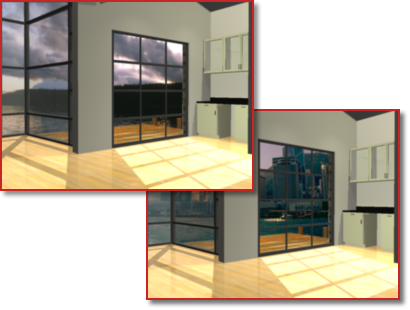Use environmental features to set up image-based lighting (IBL), lighting exposure, or a background image.
You can enhance a rendered image with environment effects such as image-based lighting or by adding a bitmap image to a scene as a background.
Image-based Lighting
Image-based lighting (IBL) affects the lighting and shadows calculated by the renderer. Based on the image specified, it can adjust the brightness and contrast of the final rendered image. Optionally, the image map used for image-based lighting can be applied to the background of a scene when rendering.

The Render Environment & Exposure palette sets the image-based lighting settings such as image map, rotation, and background display.
Exposure and White Balance
The exposure and white balance settings are used to control the brightness and lighting color of a final rendered image.
Exposure allows you to brighten or darken a rendered image.

White balance allows for the lighting in a rendered image to be cooled or warmed. Cool light makes the image appear blueish, while warm light makes the image appear reddish or orangish in color.

The Render Environment & Exposure palette sets the exposure and white balance settings to use when rendering.
Backgrounds
A background is basically a backdrop behind the model. Backgrounds can be a single color, a multi-color gradient, a bitmap image, a simulated sun and sky, or an image-based lighting map.

Backgrounds work best when you are rendering still images, or animations in which the view doesn’t change or the camera doesn't move. Once set, a background can be associated with a named view or camera and is saved with the drawing.
All background types with the exception of an image-based lighting map can be set from the View Manager. The Render Environment & Exposure palette is used to set an image-based lighting map as the background of a viewport, and can also be used to assign one of the other background types to a viewport.